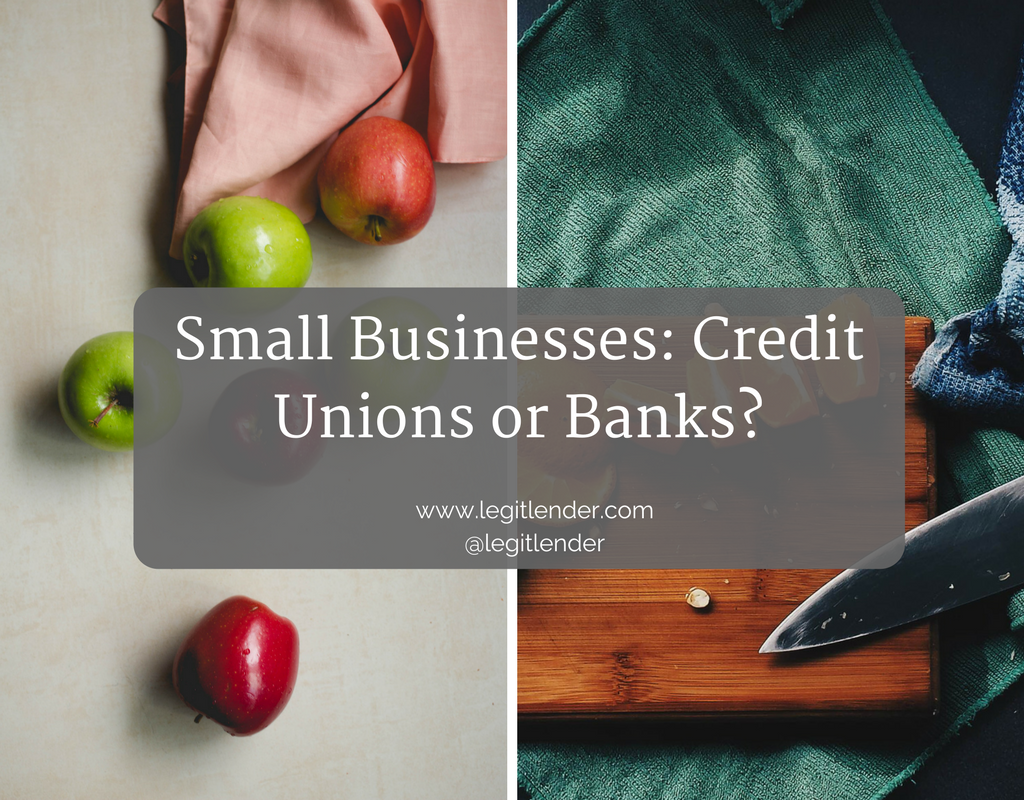
There are a ton of options for small businesses looking for loans: online lenders and mega-banks are the ones that you’ve probably heard of (and who have probably junk mailed you recently).
There are two additional options for small businesses: credit unions and community banks. Not too many folks understand how a credit union differs from a bank.
In a nutshell
Here’s a quick look at how credit unions and banks compare across a variety of criteria you may find important:
| Credit Union | Bank | |
|---|---|---|
| Fees and Interest Rates | ⊕ | |
| Personalized Service | ⊕ | |
| Branch Locations | ⊕ | |
| Technology | ⊕ | |
| Lending Products | Generally offer similar stuff | |
| Ease of joining | ⊕ | |
Banks and Credit Unions are hungry for small businesses
Both banks and credit unions offer some form of deposit insurance for being a customer (or, in the case of a credit union, a member). The Federal Deposit Insurance Corporation, or FDIC, insure up to $250,000 for banking customers. An equivalent form of protection is offered by the National Credit Union Administration.
Even as a business customer, you get the same protections as a consumer, as long as you’re properly organized under applicable state law, and that the purpose of your business isn’t to get deposit insurance.
Credit unions tend to offer lower fees and lower lending interest rates. And, they provide better customer service. No major study has been performed on customer satisfaction from the perspective of small business owners (yet), but the conclusions from the American Customer Satisfaction Index hold for small businesses: credit unions offer better customer service than large banks, but about the same as smaller, community-oriented bans.
Additionally, credit unions have their own ATM networks (like CO-OP), so you get a similar breadth of ATM coverage as you would with a major bank.insurance coverage from the FDIC.
On the technology front, most credit unions are laggards behind major banks’ investments into mobile technology. Don’t expect those app features from Megabank to be offered by your local credit union’s app.
Credit Unions are non-profits. Banks aren’t.
Why is it that you see these amazing credit card offers from large banks? Why is it that you see these same banks advertising everywhere? And why haven’t you heard of most credit unions?
In short, the business model of a large bank is to acquire deposits at as low an interest rate possible, and loan money against those deposits at as high a rate as possible, in order to generate profits for their owners (who in most cases are not their customers). Cheap cost of funds, a large ‘spread’ between interest rates charged to their customers and cost of funds, and a healthy dose of non-interest income (fees) equate to happy shareholders. In order to maximize profitability, banks have found success in spending buckets of money on marketing and offer ‘jawdropping’ introductory offers. For customers who are sloppy payers or revolving their debt, banks squeeze them for interest and fees. For those who pay their bill on time, they enjoy their loan benefits (through rewards and/or a low interest rate).
Credit unions approach their business differently. Their members are their owners. Most credit unions were begun as a way to serve an affinity group, whether people who work at the same company, live in a geographic region, follow the same religion, etc. And, as a result, they attempt to provide good terms and low fees to all of their members. The downside? In general, their introductory ‘offers’ for products like credit cards and other loans are less favorable than those offered by a bank.
How to choose
Here’s how to choose the right bank or credit union.
- Figure out what matters the most. Personalized service? Cheap funds? Branch locations to do business?
- Generate your list of banks and CUs: We’ve created a list of our favorite credit unions for small businesses.
- Narrow the list: Match your list up against what matters most. Then, find out if you qualify for membership (if it’s a credit union).